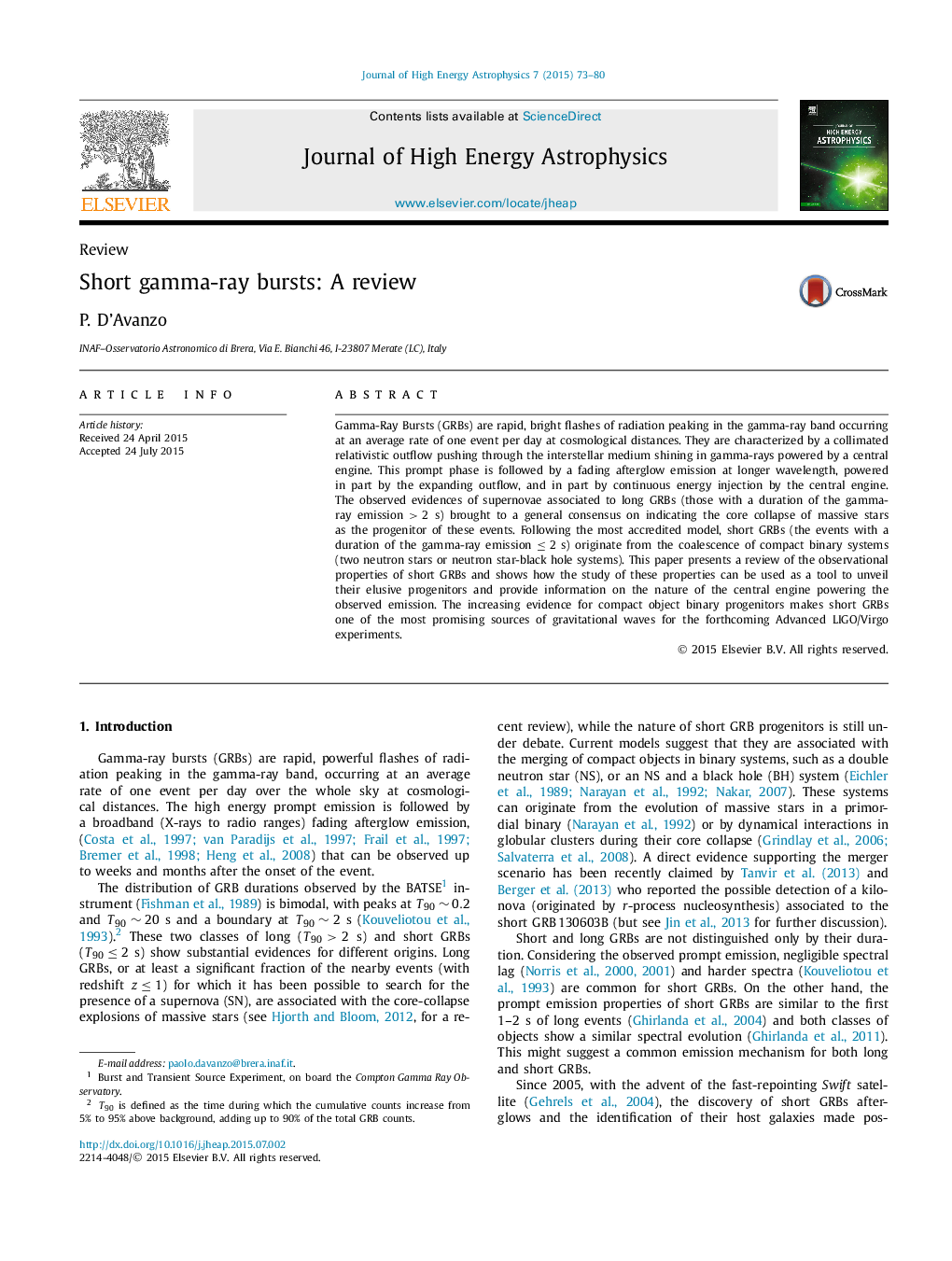| Article ID | Journal | Published Year | Pages | File Type |
|---|---|---|---|---|
| 1778635 | Journal of High Energy Astrophysics | 2015 | 8 Pages |
Gamma-Ray Bursts (GRBs) are rapid, bright flashes of radiation peaking in the gamma-ray band occurring at an average rate of one event per day at cosmological distances. They are characterized by a collimated relativistic outflow pushing through the interstellar medium shining in gamma-rays powered by a central engine. This prompt phase is followed by a fading afterglow emission at longer wavelength, powered in part by the expanding outflow, and in part by continuous energy injection by the central engine. The observed evidences of supernovae associated to long GRBs (those with a duration of the gamma-ray emission >2 s>2 s) brought to a general consensus on indicating the core collapse of massive stars as the progenitor of these events. Following the most accredited model, short GRBs (the events with a duration of the gamma-ray emission ≤2 s≤2 s) originate from the coalescence of compact binary systems (two neutron stars or neutron star-black hole systems). This paper presents a review of the observational properties of short GRBs and shows how the study of these properties can be used as a tool to unveil their elusive progenitors and provide information on the nature of the central engine powering the observed emission. The increasing evidence for compact object binary progenitors makes short GRBs one of the most promising sources of gravitational waves for the forthcoming Advanced LIGO/Virgo experiments.
